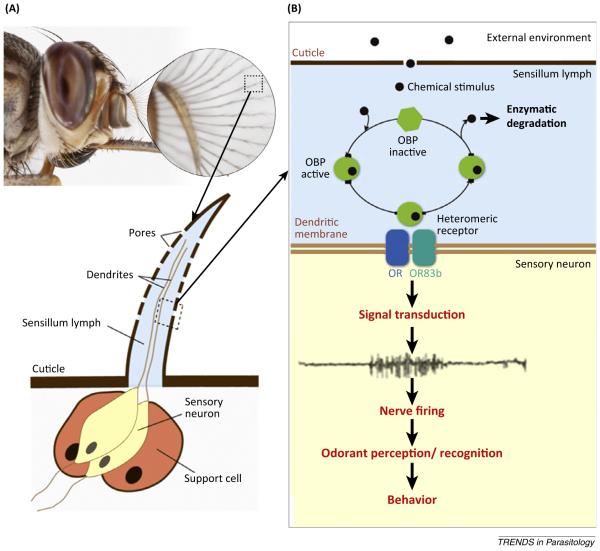Figure I.
Schematic representation of insect olfaction. (A) shows the antennae of tsetse, with extensive branching to which sensilla (little hairs) are attached. Sensilla details are shown, with the structure depicting pores through which odorants enter. (B) shows how odorants are transported through sensillum fluid to the olfactory receptors in the neurons. Two olfactory receptors are necessary for activation – a specific receptor and a common receptor. Odorant binding triggers a signal transduction cascade that results in neuronal firing and brain-centered perception of the odorant, which triggers the appropriate behavioral response. For additional details, see [12]. Photo of tsetse fly head courtesy of Geoff Attardo, Yale School of Public Health; graphics by Brian Mwashi, icipe.

